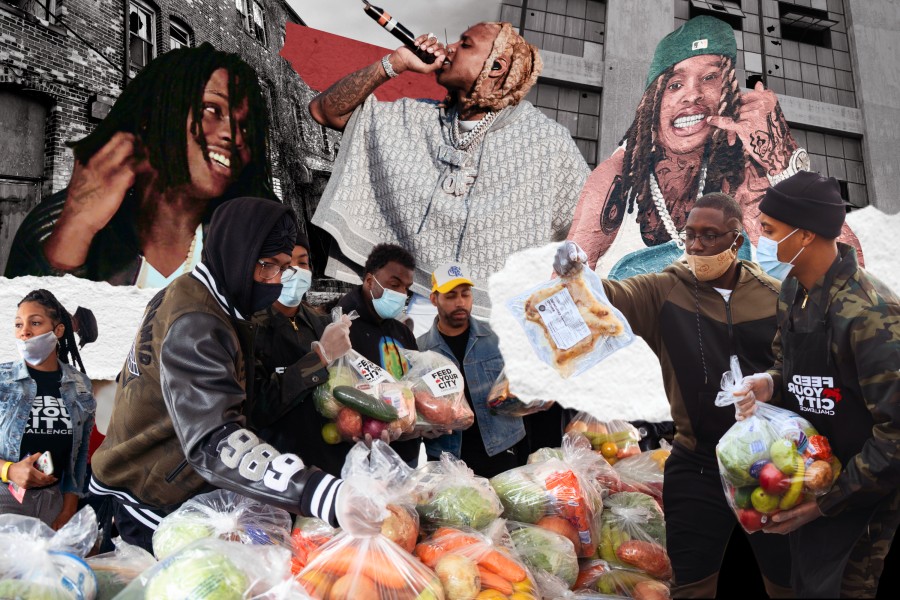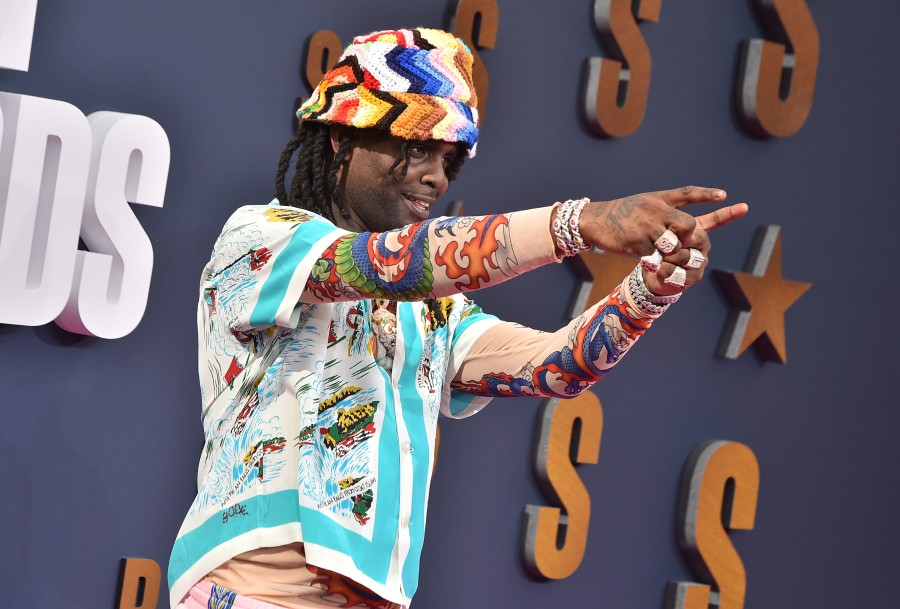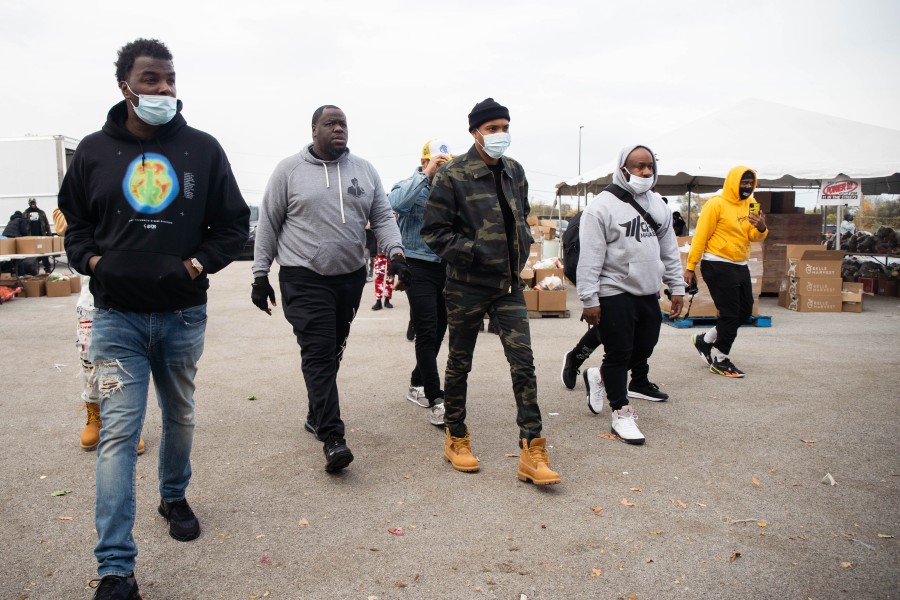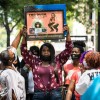
Drill rap is on trial. But is the message behind the music getting lost in the hysteria?
In an essay, a digital innovation professor and South Side youth educator argue that the moralizing about drill rap’s glorification of violence obscures the stories of loss and frustration from the artists behind the music.
By Reginold Royston, Ph.D. and Nile LansanaChristopher Thomas has a vivid memory of the first time he heard drill music. In 2011, he was working at Nancy B. Jefferson Alternative School within Cook County Juvenile Detention Center, aiming to inspire incarcerated youngsters with footwork and other forms of hip-hop culture.
One afternoon, he offered to play a DVD by his group, the FootworKINGz, to connect with the teenagers who were there. Before he played the video, one of the young people made an offer to Thomas, a 39-year-old street dancer and youth educator who grew up in Altgeld Gardens on the South Side and is called “Mad Dog” by his peers. “This one cat said ‘We’ll do whatever you want us to do, if you let us listen to one song.’ I was like, I can meet those terms. And the song was ‘I Don’t Like.’ ’’
The teenager who made that bargain was none other than Keith “Chief Keef” Cozart, a then-15- year-old in the youth detention center. It was Keef’s own song, but it would be another year before the rapper released the video for it, filmed while he was on house arrest at his grandmother’s home. That video would go viral, catapulting the teenager — and Chicago drill — to national attention in just a few months.

Drill music is known for its epic, swelling horror-soundtracks, and rough-hewn testimonials on street life, and often gets criticized for lyrics and videos with gang disses and references to alleged crimes. Outside of the United States, drill has gone viral in the last five years, with artists claiming the genre from as far-flung places as Ghana, Germany and Japan. Along with the enthusiasm for its propulsive music and at times dark themes, a law enforcement response and moral panic has ensued that is at times not unwarranted. Lyrics and videos are now centerstage in two prominent U.S. trials: one in Chicago, related to the killing of FBG Duck, and in an Atlanta case surrounding Young Thug.
As scholars and youth educators, we recognize the fervor over links between violence and the music. But that fervor obscures the message of loss and frustration from the young artists and the audiences responding to it. Drill’s critics are often not hearing the pain seething beneath the sound.
Today, Mad Dog works as a program manager with Kuumba Lynx, a nonprofit that trains Chicago youth for arts careers. He remembers that moment back at the detention center with some joy. “I ain’t gonna lie, I said ‘This is tight!’ In seconds, the guys were just turning up in the space. They were singing the song, and I started jumping around with them. The next thing you know, the security is jumping around, dancing, and we all start turning it up.”
Even so, he despises “the celebration of Black death” by the record industry, as well as drill culture’s over-the-top gun bravado, calculated for maximum clicks online. But he also argues that drill music is a release for young people dealing with generations of gun violence and systemic racism.
“Is it wrong for him to say the things he don’t like?” Thomas said, referencing the refrain in Keef’s breakout hit. “He’s basing it off his living conditions, where he stays at, where he can and cannot go. Because he has folks that look just like him, in the same living condition as him, wanting to kill him.”
Drill’s global virality
In its original form, drill music emerged out of conditions where people felt hopeless and life felt tenuous. This darker sound achieved national recognition with artists such as Keef and Young Chop in the mid 2010s as well as King Louie, who coined the term “Chiraq.”
The rap style has become global in the last five years with adoption of the genre in Britain. South London’s zany and techno-ish versions made U.K. drill positively exotic for the international crowd, aided in no small part by England’s famously sensational music press and public arts programs. Lighter, more club-oriented drill tracks have emerged along with viral dances such as the Gun Lean and the Sturdy, which have become a favorite celebration for some professional athletes.
“It used to be funny to see the girls complain, when [Keef’s] ‘Faneto’ came on. They’d all groan. ‘Oh, they’re gonna cut up,’ ” said CaSera Heining aka DJ Ca$h Era, who was named Best Hip Hop DJ in 2022 in Chicago Reader.
Ca$h Era regularly performs at the United Center for Chicago Bulls games and has thrown in more party-friendly drill tracks spinning at Chicago Sky games. Several years after “Faneto,” she says, there’s a drill song called “Barbie World” featured in the Barbie movie. “I don’t think Chief Keef ever would have predicted that.”

Still, drill rap has ended up on trial in Cook County and around the world. In a Chicago trial underway, lawyers have highlighted phrases such as “BDK,” a reference to the Black Disciples, and “Not from 63rd Street” — an area near the Parkway Gardens — to trace a history of feuds between slain rappers King Von and FBG Duck on Instagram and in their drill lyrics.
In Atlanta, prosecutors are using online personas, song lyrics and social media videos to argue a racketeering case that has the Grammy Award-winning artist Young Thug at its heart. In the U.K., drill artists have been indicted for posting videos connecting them to bloody knife crimes and taunting victims on social media. There, preemptive crime investigators regularly cite social media posts featuring gang threats by drill rappers in ski masks reminiscent of video games like “Call of Duty.”
Swedish drill rappers have been tied to military-style bombings in Stockholm and crime outside the country, including Iraq. A Netflix documentary released this fall chronicles the Pacific Islander drill group OneFour’s ongoing dealings with the Australian police.
Despite how violence is indelibly linked to this Chicago-born music, Ca$h Era sees the art beyond drill’s stigma.
“I think the appeal of drill music is like, ‘Yo, I can tell my story and get you hyped and amped up at the same time.’ The anger and the passion that I’m feeling while I’m writing and spitting this, you can feel in the track as well,” she said. “You’re hearing stories. You have people that face similar types of lifestyles and violence globally. These are not just Chicago kid issues.”
Hearing youth trauma
When drill began going viral in the early 2010s, many of the big artists were minors. Chief Keef signed a $6 million record deal with Interscope based on the records he released when he was 16. Lil Mouse inked a deal at age 13 for tracks like “Get Smoked.”
When Lil Durk raps, “In my own city they hate on me… I can’t do no shows ‘cause I terrify my city,” we glimpse the tortured interiority of lives that feel like they’re always on trial. Tracks like “Dis Ain’t What U Want” describe worlds that are only empowered by exploitive channels of social media, the gun industry and the illegal drug trade.
While we might celebrate the lyrical dexterity and self-reflectiveness of rappers on newer drill songs such as G Herbo’s “PTSD,” we acknowledge that there are just as many drill tracks like “GD Anthem” and “Crazy Story” that go viral and stoke gang rivalries.

Algorithms that power streaming platforms seem to amplify the worst aspects of the genre’s culture by surfacing videos with violence and drama. News ratings thrive on artists being affiliated with criminal activity. What gets less attention is when drill rappers donate money to outreach groups like Good Kids Mad City or create community organizations such as Swervin Thru Stress, which supports young people’s mental health.
“If their experiences scare you, maybe you need to go listen to the songs more,” said DJ Ca$h Era. “Why avoid it at all costs? The people making the music don’t get that luxury. They’re literally putting it in the music to escape it for two seconds, and let you know what they’re going through.”
As drill becomes mainstream, let’s reconsider the efforts that are being made to isolate and neutralize this uniquely Chicago-born form of cultural expression. The youth who are seeking to express themselves and make a legitimate career through a bold and propulsive art form are not without humanity. Nor are they beyond our compassion.
Mobilizations like the Protect Black Art campaign are a step in the right direction. But instead of asking, “Which came first, the violence or the violent music?,” we need to ask what can be done by those with responsibility for public safety and public health to hear the voices of youth speaking through their pain.
Dr. Reginold Royston studies digital innovation at University of Wisconsin, Madison, and conducts research with DJs, musicians and dancers in Chicago and in West Africa. Nile Lansana is an interdisciplinary artist and youth educator who grew up on the South Side and served as a member and coach with the Rebirth Poetry Ensemble. He was a contributor to the 2020 publication “American Gun” that addressed gun violence in the city.

